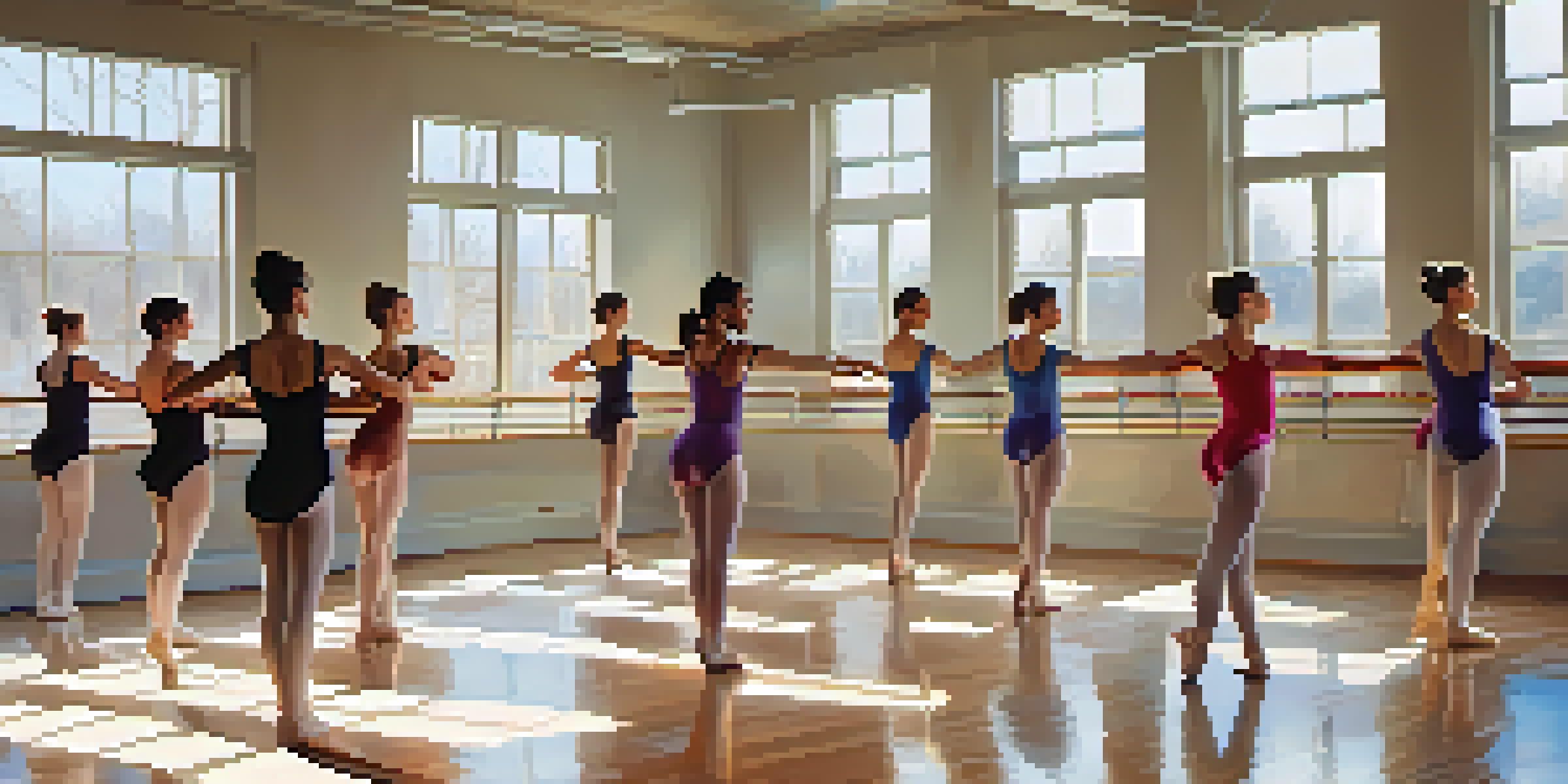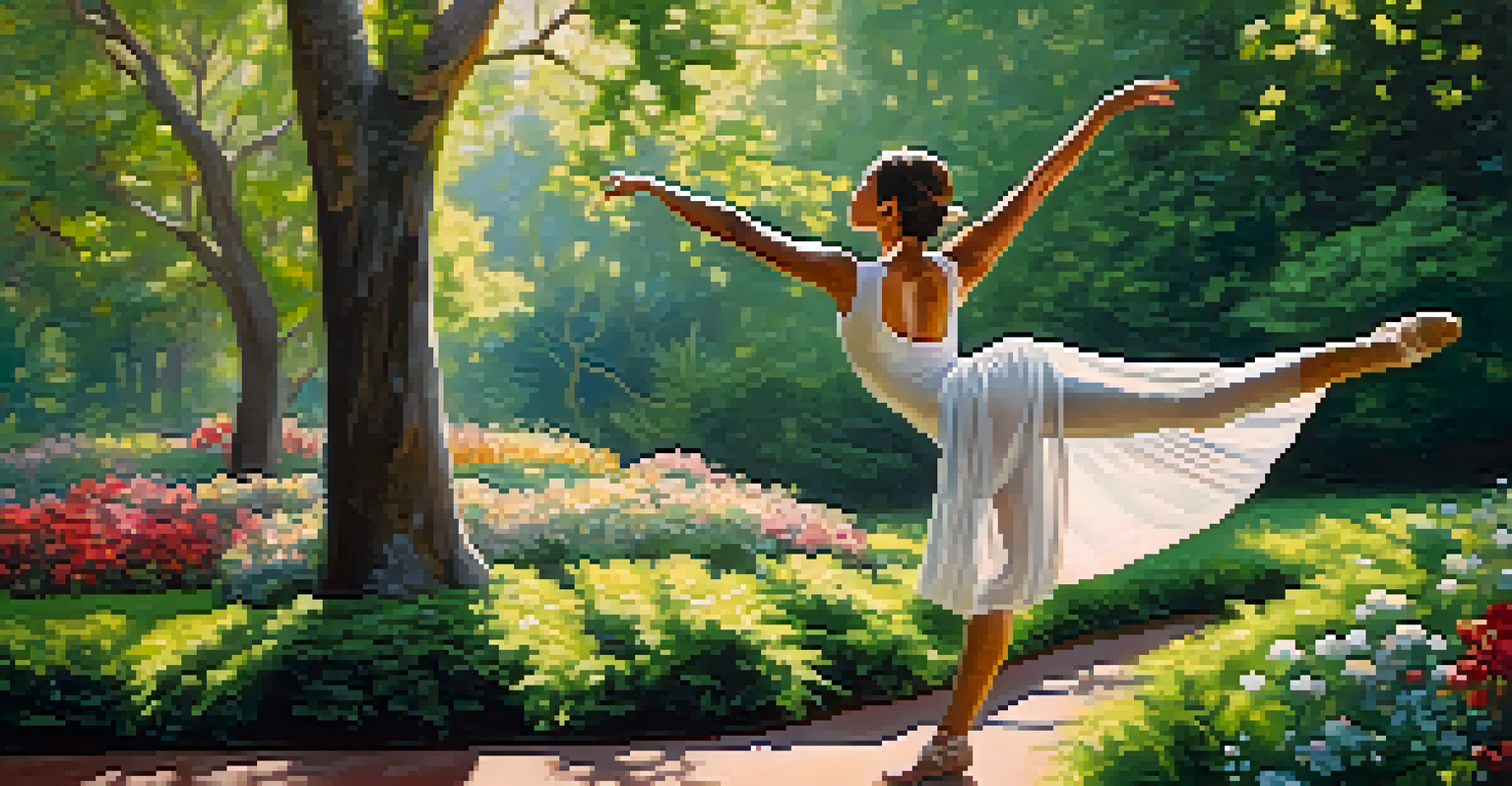The Connection Between Dance, Emotion Regulation, and Health

Understanding Dance as a Form of Expression
Dance has been a universal form of expression across cultures and ages. It allows individuals to convey feelings that words may not fully capture. Through movement, dancers can express joy, sadness, anger, or even love, making it a powerful emotional outlet.
Dance is the hidden language of the soul.
When you watch a dancer perform, you often feel the emotions they’re expressing, whether it’s the graceful flow of ballet or the energetic beats of hip-hop. This connection transcends language and creates a shared emotional experience, fostering a sense of community.
Moreover, engaging in dance yourself can help you tap into your emotions, encouraging self-reflection and a deeper understanding of what you’re feeling. This connection between movement and emotion lays the groundwork for exploring how dance contributes to emotional regulation.
The Science Behind Dance and Emotion Regulation
Research has shown that dance can significantly impact our emotional states. When you dance, your brain releases endorphins, which are chemicals that promote feelings of happiness and reduce stress. This biochemical response is crucial for emotional regulation.

Additionally, dance can serve as a form of mindfulness; by focusing on movement and rhythm, dancers can shift their attention away from negative thoughts or stressors. This shift not only elevates mood but also enhances overall mental well-being.
Dance Enhances Emotional Expression
Dance serves as a powerful outlet for expressing complex emotions that words often cannot convey.
Furthermore, studies indicate that structured dance programs can help individuals with anxiety and depression. By providing a safe space for expression, dance encourages emotional release and helps individuals learn to manage their feelings more effectively.
Physical Health Benefits of Dance
While the emotional benefits of dance are significant, the physical health advantages shouldn't be overlooked. Dancing is a full-body workout that improves cardiovascular health, strength, and flexibility. It's a fun way to stay active without the monotony that sometimes comes with traditional exercise.
Dancing is like dreaming with your feet.
Moreover, dancing engages various muscle groups and can enhance coordination and balance. This physical engagement not only boosts fitness but also contributes to better body awareness, which can positively influence emotional health.
Regular dance practice can lead to improved body image and self-esteem, as individuals feel more connected to their bodies. This sense of empowerment can be transformative, reinforcing the connection between physical health and emotional well-being.
Dance as a Tool for Social Connection
One of the most rewarding aspects of dance is its ability to foster social connections. Whether in a dance class, at a party, or during community events, dancing brings people together, creating a sense of belonging.
These social interactions can be incredibly beneficial for emotional regulation, as supportive relationships are vital for mental health. Sharing the joy of dance with others can alleviate feelings of loneliness or isolation.
Dance Supports Mental Well-Being
Engaging in dance can release endorphins and promote mindfulness, significantly improving mood and emotional regulation.
Moreover, group activities like dance can build teamwork and cooperation, helping individuals develop social skills and emotional intelligence. This communal aspect of dance enriches the overall experience, making it a powerful tool for enhancing emotional well-being.
Dance Therapy: A Professional Approach
Dance therapy is a clinical approach that uses dance as a form of expression and healing. Licensed dance therapists guide individuals or groups through movements designed to explore emotions and facilitate personal growth.
This therapeutic practice has been shown to benefit individuals dealing with trauma, anxiety, and depression by providing a unique outlet for expression. It allows participants to process feelings in a safe and supportive environment.
Through dance therapy, individuals can gain insight into their emotional states and learn coping strategies that promote healthier emotional regulation. The combination of movement and therapy creates a holistic approach to mental health.
Incorporating Dance into Daily Life
You don’t need to be a professional dancer to reap the benefits of dance; incorporating it into your daily routine can be simple and enjoyable. Whether it’s a dance workout video, a local class, or just dancing in your living room, the key is to move and enjoy yourself.
Setting aside time for dance can be a joyful escape from daily stressors. Even a few minutes of dancing to your favorite song can lift your spirits and help you reconnect with your body and emotions.
Social Connections Through Dance
Participating in dance fosters social interactions, which are crucial for emotional health and reducing feelings of isolation.
Additionally, consider inviting friends or family to join you. Dancing together can strengthen bonds and create shared experiences that enhance emotional well-being for everyone involved.
Conclusion: Dance as a Holistic Approach to Well-Being
In conclusion, the connection between dance, emotion regulation, and health is profound. Dance offers a unique blend of physical activity, emotional expression, and social interaction, all of which contribute to a healthier and happier life.
By engaging in dance, you not only enhance your physical fitness but also gain a valuable tool for managing emotions and connecting with others. It’s a holistic practice that nurtures both body and mind.

So why not put on your favorite music and start dancing? Embrace the joy of movement, and you may find that it transforms your emotional landscape and overall health.